When it comes to landscaping, one of the most important decisions you will make is what trees to plant. There are a number of different options available, but two of the most popular choices are chokecherry and buckthorn.
Both of these trees have their pros and cons, so how do you decide which one is right for you? In this blog post, we will compare chokecherry and buckthorn in detail and help you decide which one is the best fit for your needs!
Chokecherry Vs Buckthorn
Chokecherry trees grow larger and faster than buckthorn trees, but the easiest way to identify and differentiate the trees is to look at the fruits produced by each. While buckthorn fruits have multiple seeds, chokecherry fruits have a single seed in the center.
I will now go further into detail about the differences between these two trees. By the end of this post, you should have a good idea of which one is right for you!
1. General Appearance
Buckthorn trees are small, spindly, and have a lot of small branches coming off the main trunk. The branches are a grey-brown color and the leaves are dark green. Chokecherry trees can grow much larger, with thicker trunks and large branches. The leaves are bright green and the branches tend to be a reddish-brown color.
2. Fruits
As I mentioned before, one of the easiest ways to tell these trees apart is by looking at the fruits they produce. Buckthorn fruits are small and black, with multiple seeds in the center. Chokecherry fruits are much larger and can be either red or black. They have just one seed in each fruit.
Buckthorn fruits may look tasty, but they aren’t edible for humans. Chokecherry fruits are edible and can be used in pies, jams, and other recipes. I wouldn’t recommend consuming raw chokecherry fruits as they tend to be bitter.

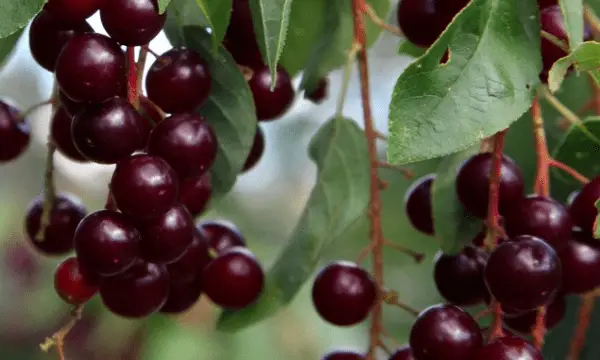
3. Leaves
Buckthorn leaves are small, dark green, and have a glossy appearance. They are also sharply serrated along the edges. Chokecherry leaves are much larger, brighter green, and have a more matte finish.
One other difference to note is that buckthorn leaves tend to be more round, while chokecherry leaves tend to be slightly more oval-shaped. The veins on chokecherry leaves also run straight, while the veins on chokecherry leaves have a more curved appearance that runs to the tip of the leaf.
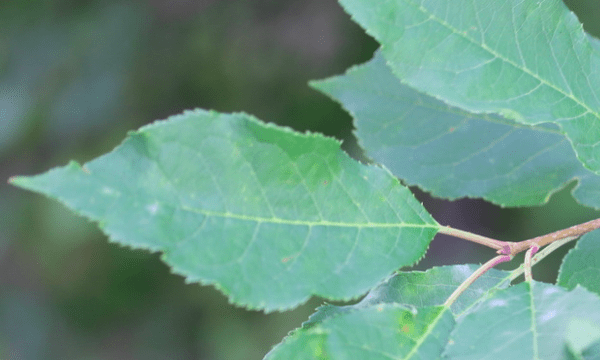
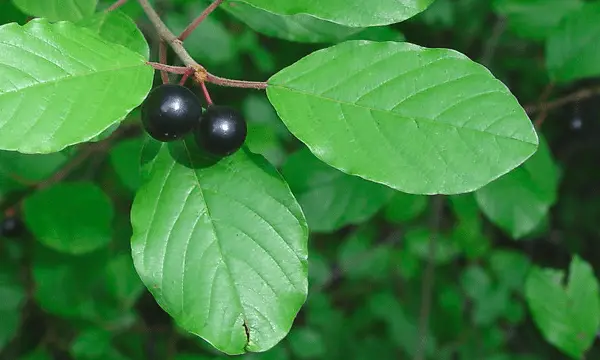
4. Flowers
Buckthorn flowers are small and green, and they grow in clusters of three. Chokecherry flowers are also small, but they are white and grow in clusters of five.
Flowers typically appear on the trees in early spring before the leaves have fully sprouted. This is one of the best ways to tell these trees apart if you aren’t able to see the fruits.
Buckthorn buds are appressed and subopposite, so they are up against the stem. In contrast, chokecherry buds are pointed and alternate, so they are not up against the stem.
Plus, buckthorn blooms tend to be less noticeable, while chokecherry flowers are beautiful and fragrant. This is another reason why chokecherry is the better choice for landscaping!
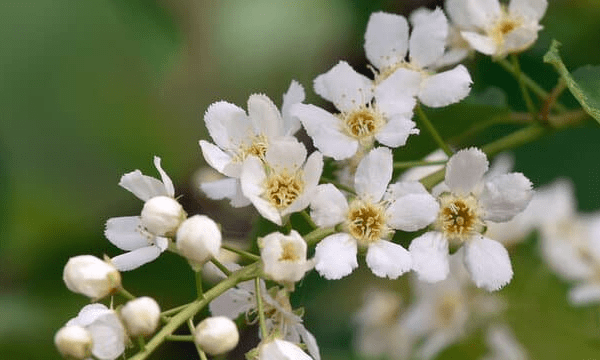
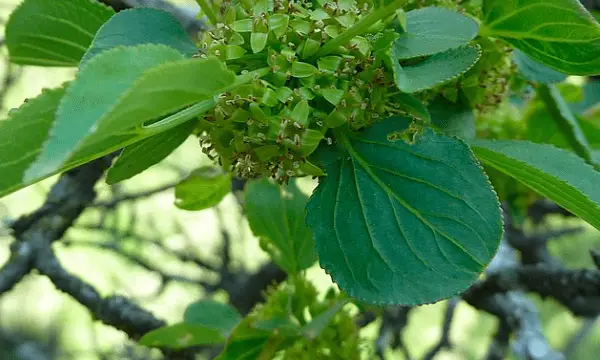
5. Bark
Buckthorns tend to have thorns near the terminal buds. Plus, there are dotted marks all along the branches and trunk. While the bark starts off as brown, it will turn grey as it matures. The bark may also start to peel over time.
The color of chokecherry tree bark can be brown or grey (with a reddish tinge). The bark is smoother than the bark of a buckthorn tree. Plus, the bark tends to darken as the tree matures, even turning black in some cases.
Conclusion
If you are looking for a tree to plant in your landscaping, you should definitely consider chokecherry and buckthorn. Both of these trees have their own unique benefits that can make them a great addition to any yard!
While buckthorn is a great choice for its low maintenance and fast growth, chokecherry is the better choice if you are looking for a tree that produces edible fruits. Chokecherry is also a beautiful tree with fragrant flowers, making it a great addition to any landscape.
I hope this post helped you learn more about these two trees and which one might be right for you. Do you have any experience with either of these trees? Let us know in the comments below! And be sure to check out our other blog posts for more gardening tips and tricks!
Tim is an avid gardener from the UK. He was the founder of PlantCarer.com from 2021 to Sep 2023. He sold PlantCarer.com to Aaron. He has since started his own business called Seed To Supper, which provides new gardeners all the materials you need in a box (pots, seeds, compost and instructions) to grow your own delicious and nutritious vegetables and herbs from start to finish – no garden required.









0 Comments